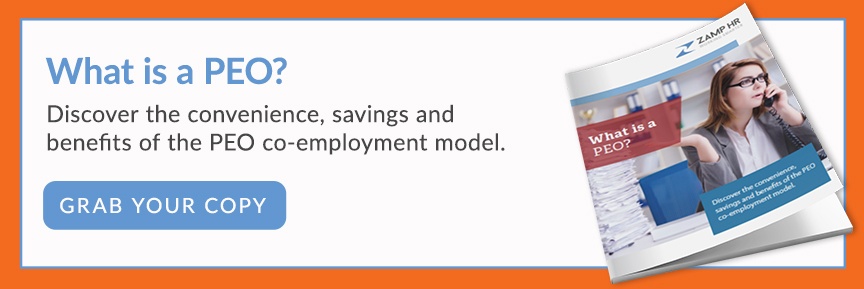The more efficient an HR department is, the more profitable the organization will be overall. After all, every hour that an HR employee spends on administrative tasks and other activities has a concrete cost. Such costs include salary, benefits, time diverted away from other critical activities, and other opportunity costs.
Best-in-class HR technology consolidates many of these HR tasks within a centralized system. When tasks such as benefits enrollment, hiring, onboarding, reporting, payroll processing, and time and labor management are unified within an all-in-one tech stack, the company as a whole benefits.
Benefits Enrollment
There are several advantages associated with benefits enrollment via HR-specific technology, rather than through email chains or paper forms. Some of these advantages include:
- Convenience. When both employees and HR professionals can access benefits plans over a centralized network, the benefits enrollment process becomes much easier. For instance, employees can select their preferred plans via a self-service portal, and only have to seek assistance from HR professionals as needed.
- Security. Using email messages or paper forms comes with the risk that "prying eyes" will gain access to sensitive employee data. On the other hand, when employees have the self-service option (i.e., enrolling themselves in a benefits plan), it is less likely that unauthorized parties will obtain confidential information.
- Easy comparison & selection process. HR technology can make the decision-making process a cinch for which benefits plan an employee should choose. Easy-to-access and understandable comparison charts, along with a user-friendly selection workflow, empower employees to determine the benefits packages that work best for them.
Hiring
HR technology has been a game-changer for the hiring process. In the past, corporate recruiters had to post job openings manually and spent an inordinate amount of time keeping applications, resumes, and candidate profiles organized.
Nowadays, advanced HR platforms can track and organize all received applications and pull up candidate profiles with the click of a button. Furthermore, HR technology allows hiring managers to screen applicants early in the process, schedule interviews with job candidates, and quickly and efficiently update their job listings.
Onboarding
The onboarding process used to be a long, tedious endeavor for HR professionals and new employees alike. There were dozens of critical documents that needed to be filled out by hand, such as I-9 forms, W4s, and other essential papers. Employees would get tired of filling out these forms, and would often make mistakes. At the same time, HR administrators would often get frustrated by this operational bottleneck.
However, advanced HR technology eliminates much of the "sting" from the onboarding process. For instance, self-service portals allow new hires to quickly fill out key documents online, often at their convenience. This capability also eliminates the need for HR employees to transfer written information over to a centralized database.
This streamlined onboarding process enables new hires to acclimate to their job more quickly and helps HR professionals be more productive in their time at the office.
Reporting
HR technology also integrates managerial reporting with payroll and time/attendance software. This can be extremely beneficial for managers that want to review employee performance, audit their team for punctuality and attendance, adjust employee schedules, or review time-off requests. With a single-sign-on system at their fingertips, managers won't have to sort through dozens of files or browse to different software programs just to find the information they need.
Payroll
Advanced HR technology can streamline payroll processing by integrating time and attendance software. Hours can be entered automatically or manually, depending on the need. Moreover, when a company's payroll system is integrated with time and labor, the HR department's efficiency is increased that much more.
Time and Labor
There are many benefits associated with a streamlined time and labor platform located online, compared to manual punch-cards. For instance, many businesses retain employees who work off-site or have work sites that change daily. In such scenarios, manual punch-cards become less effective.
However, advanced HR platforms have geofencing built into their clock-in/clock-out system. These geofencing capabilities allow managers to easily identify "out-of-bounds" punches, time theft, and other problem areas.
The Many Benefits of All-In-One HR Technology
As the above clearly shows, an all-in-one HR tech stack is a prime contributor to HR department optimization and overall organizational efficiency. All-in-one HR technology can save hours each week that would otherwise be spent transferring data from one system to another, juggling multiple points of access to retrieve essential employee information, and reviewing critical tasks for human error.
While some companies decide to "patch components together" instead of investing in an all-in-one solution, this route can lead to difficult technical problems, higher time and opportunity costs, and ultimately greater expense. In contrast, all-in-one HR technology is a turnkey solution that allows for a great deal of customization and flexibility.
For Professional Employer Organizations (PEO) clients, all-in-one HR technology comes as a free add-on service. To learn more about this as well as other benefits related to working with a PEO, download our eBook "What is a PEO?"



